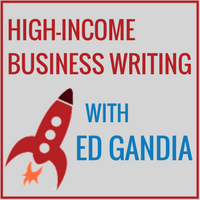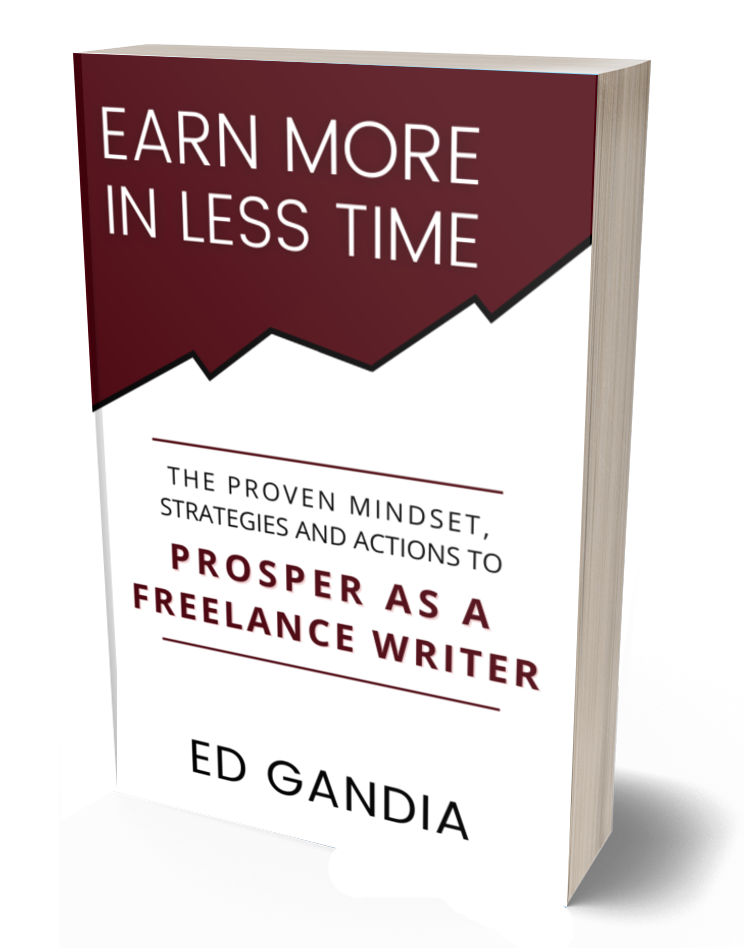Episode Summary
Why do so many talented freelancers stay stuck year after year? It’s not because of market conditions, AI, or lack of experience — it’s because of hidden, faulty assumptions that shape decisions and limit options.
In this episode, we uncover how these invisible mental barriers hold freelancers back and how to break through them with a structured, practical approach.
What You’ll Learn:
- How to identify hidden assumptions that keep you stuck
- The Assumption Audit: A framework to challenge limiting beliefs
- How first-principles thinking helps you create better solutions
- Real-world examples of freelancers overcoming their mental roadblocks
- Actionable steps to test new empowering assumptions and create breakthroughs
Key Takeaways:
The Invisible Problem: Hidden Assumptions
- Many freelancers believe they’re stuck because of external factors (competition, AI, bad clients), but the real issue is often internal.
- Assumptions operate in the background like invisible software, filtering out opportunities before you consciously consider them.
- The biggest breakthroughs happen when you identify and challenge these faulty assumptions.
The Assumption Audit: A 3-Step Framework
- Define Your Sticking Point – What’s the biggest challenge in your business right now? What decision have you been avoiding?
- List Every Assumption – Write down everything you believe about this problem, even if it seems obvious or unchangeable.
- Challenge and Reframe – Use fact-based analysis to break down each assumption and explore alternative perspectives.
Examples of Limiting Assumptions & How to Reframe Them
- “I can’t find higher-paying clients.” ? Fact: Many freelancers charge premium rates. The real issue isn’t a lack of clients—it’s a lack of a system to find and convert them.
- “AI is replacing writers.” ? Fact: AI is a tool, not a replacement. Businesses still need human insight, strategy, and nuance. The opportunity is in using AI to enhance, not replace, your skills.
First-Principles Thinking: Breaking Assumptions Down to Their Core
- Instead of relying on “common knowledge,” analyze problems from the ground up.
- Example: Investors like Charlie Munger stripped business decisions down to fundamental truths, leading to long-term success.
- Freelancers can apply the same principle to business challenges—questioning industry norms and carving out unique solutions.
Reframing Your Problems for New Solutions
- Ask yourself powerful questions:
- “If I had to solve this problem in 30 days, what would I do?”
- “What if failure wasn’t possible?”
- “What if I reversed the problem and worked backward?”
- By shifting perspective, you open up solutions you may never have considered.
Testing New Assumptions
- Don’t try to change everything at once—pick one assumption and design a simple experiment to test it.
- Example:
- Old belief: “I need a huge portfolio to charge premium rates.”
- New belief: “One strong case study is more valuable than multiple weak samples.”
- Test: Create a deep case study and pitch it to five potential clients.
Avoiding Blind Spots & Taking Action
- Many freelancers struggle not because of a lack of information, but because they’re too close to their own business to see their blind spots.
- The fastest breakthroughs come from questioning deeply held beliefs and taking small, strategic steps toward change.
Listener Challenge:
- Identify the biggest challenge in your business.
- List all the assumptions you’ve made about why it’s a problem.
- Challenge those assumptions with facts.
- Pick one new, empowering assumption and design a small experiment to test it this week.
Want Help with Your Breakthrough?
If you’re serious about breaking through your biggest challenge, working with an experienced business coach can provide the objective feedback and accountability needed to accelerate progress.
I’ve coached well over 1,000 freelance writers, copywriters and solo marketers over the past 13 years. And I open up coaching spots a few times a year to help freelancers pinpoint blind spots, implement effective strategies, and achieve real breakthroughs.
If you’re interested in exploring this, email me [ed@b2blauncher.com] with “COACHING” in the subject line. I’ll reply with some questions to learn more about what you’re looking for. If it sounds like I can help, I’ll send you all details.
Final Thought
What assumptions are YOU holding onto that might be keeping you stuck? It’s time to break them down and build something better.
The notes that follow are a very basic, unedited summary of the show. There’s a lot more detail in the audio version. You can listen to the show using the audio player below. Or you can subscribe on Apple Podcasts, Spotify, Stitcher, Google Podcasts, Amazon Music or wherever you listen to podcasts.


High-Income Business Writing with Ed Gandia
#367: How to Use First - Principles Thinking to Fix Your Mental Blind Spots and Transform Your Freelance Business
Key Topics and Bullets:
- Coaching client’s challenges with prospecting.
- Common mistakes freelancers make, like giving up too soon.
- Assumptions influencing decisions.
- Need to question and challenge these assumptions.
- Misconceptions about market conditions and AI.
- Assumptions preventing freelancers from taking action.
- Steps to identify and challenge assumptions.
- Importance of defining challenges and exploring assumptions.
- Moving beyond conventional wisdom.
- Breaking down assumptions to find core truths.
- Approach as experiments rather than permanent changes.
- Practical examples of testing hypotheses.
- Techniques for rethinking problems.
- Highlighting the importance of trying new approaches.
- Invitation to explore coaching for further support.
Key Topics and Bullets:
00:00 Ed– You know what’s been on my mind lately? Why so many talented freelancers stay stuck year after year. And I’ve got news for you. It’s not for the reasons that most people think about. So I was talking with a coaching client just a few weeks ago who had been doing fairly consistent prospecting for almost a full month. She was sending emails out regularly. She was following up the whole nine yards. But she was ready to throw in the towel, and she said something along the lines of, Ed, I I don’t know. This isn’t working. I’ve sent over 40 emails. I’ve gotten nowhere. Couple of positive replies, but they haven’t led to work yet. Maybe I just don’t know. I think I might need to try something different. And here’s what fascinated me. When I helped her unpack what she had been doing and what she had done so far and what she was focusing on and how she was going about it, it was pretty clear that she was actually closer to success than she might have realized. But like so many writers, she was ready to give up right before the magic actually happens. Because let’s face it. The magic never happens when we want it to. Right? It happens on its own schedule. And that’s just one example of many. I I often talk with writers and seller marketers who won’t go after a prospect they’d love to work with because they don’t think they’re experienced enough, or they won’t propose more and bigger service options to a client because they worry that the client will say no or be offended by the higher pricing, or they won’t ask a prospect for an idea of their budget range for this big complex project they’re looking to to tackle, where they find themselves with a dry pipeline and then start blaming AI for taking away writing projects and doing so with little to no evidence of that.
03:16 Ed– I’m saying this as someone who is human just like you are and deals with the same problems, the same hang ups. But these assumptions are something that we need to pay much more attention to. Because here’s what makes them particularly dangerous, their invisibility. They operate like software running in the background of your mind, and they just filter out opportunities and solutions before you even consciously consider those opportunities and potential solutions. In fact, every time you think, oh, that’s not gonna work for me or I can’t do that because and I hear that a lot, by the way. But every time you say those things or even think about them, you’re likely bumping up against one of those hidden assumptions. I see it all the time, especially with seasoned, very accomplished, very experienced writers, copywriters, solo marketers, and solo publicists. These are smart, talented professionals who can’t figure out why they’re not breaking through to the
09:07 Ed– And what I want you to do for each of these challenges that you’re facing, and I want you to ask yourself the following powerful questions. What do I believe to be true about this problem? What do I believe is stopping me from solving it? And what solutions have I already ruled out and why? Here’s the thing. Most of our assumptions feel like objective truths, but they’re often just stories we tell ourselves based on past experiences or just inherited beliefs from others. And, you know, we use stories because that’s the way our brains work. We’re wired to think through stories, and we use them to try and make sense of our world. That’s what our brain does. It generates stories to put issues to rest, but we rarely stop and question the stories. They’re just running again, like, saw automatic software running in our minds.
12:47 Ed– So instead of relying on conventional wisdom or industry norms, what we do together, my clients and I, is we analyze what’s objectively true and build solutions from the ground up. This approach is powerful because it strips away the layers of, again, assumptions, opinions, quote, unquote, common knowledge that often cloud our judgment. In alliance with this broader approach of prioritizing what we really need to focus on. We don’t have all the time in the world. We don’t have all the resources in the world. So we do need to focus on the things that are really going to move the needle. And sometimes, very often when we take this approach, we can start identifying those things that are really going to get us what we want faster. Here is a great example.
14:50 Ed– And this has been an approach that many business leaders, extremely successful individuals in many different professions have used. One person that comes to mind is the late Charlie Munger, who is Warren Buffett’s longtime business partner at Berkshire Hathaway. Now most investors would get caught up and still do market trends in complex financial models. But Munger realized that that wasn’t really the solution. That wasn’t the best approach. He stripped investing down to its bare fundamentals. And he famously said, take a simple idea and take it seriously. So instead of chasing hot stocks or complex investment strategies, he focused instead on businesses that had durable competitive advantages, businesses that had strong, dependable, honest management and a very strong management track record and companies that had fair prices for their customers.
16:45 Ed– Dig deeper. Look at the fundamental truths and then build up from there. I’ll tell you, I credit much of my success as both a freelance copywriter and as a business coach to my ignorance about how the business worked, about how the industry worked, about how this profession or freelancing or coaching worked. In terms of freelancing, I didn’t come from the world of journalism or marketing communications or even corporate marketing. I came from sales. I was a software sales rep writing my own sales materials. So I learned that it was actually that ignorance, if you will, that enabled me to be so successful so quickly because I wasn’t constrained by many assumptions that my smarter and way more established colleagues were making about what was possible. Now I’m not saying that to brag.
20:18 Ed– Let’s look at the AI challenge and break down the assumption that AI is replacing writers and reducing demand. Fact, AI is improving efficiency, but an overwhelming number of businesses still want human insight strategy and storytelling. Fact, high quality content requires expertise, industry knowledge, and nuance, things that AI struggles with. Fact, brands are using AI as a tool to enhance human writing, not replace it entirely. Fact, the demand for strategic content that drives business results is increasing. Fact, AI’s limitations and understanding context and nuance create new opportunities for human writers. I mean, to put it in context, this is like when I think of this assumption that, well, this tool is out there and now clients are using it to create the stuff that they were paying me for. You know? This is like the idea of me using Canva, the design tool.
25:26 Ed– Each experiment, even ones that don’t yield the results you hope for, gives you valuable information that gets you closer to a breakthrough. So let’s talk about reframing questions. Here are some powerful questions to help you reframe the problem without limiting beliefs. If I had to solve this problem in thirty days, I absolutely had to, what would I do? If I weren’t allowed to believe x is impossible, x being whatever you’re working through or whatever success would look like, what new solutions would I explore? So if I weren’t allowed to believe x is impossible, what new solution solutions would I explore? What if I pretended that I’ve already solved the problem or reached the goal? How can I work backward from that by reverse engineering the solution in my imagination? That’s one I love working with. What would someone with unlimited resources do to solve this? How would I approach this if failure wasn’t possible? How might Steve Jobs, Arianna Huffington, or Serena Williams approach this challenge? What if I could witness that? You know, what would my notes read like? What would I note? What would I see? What would I observe as I see them work through this challenge? What advice would I give someone else facing this exact challenge? So instead of thinking AI is replacing writers and I’m losing work, you could ask, what opportunities does AI create for skilled writers? How can I use AI to deliver more value to clients? And you could do one experiment, one idea would be to maybe position yourself as an AI enhanced content strategist who combines technology with human experience to deliver superior results and even more results, more assets the client can now use to improve their business. The reframing process here often reveals that what you thought was the problem was actually a symptom of a deeper opportunity. Alright. Next, you need to identify one new assumption to test.
29:03 Ed– Your new assumption might now be, well, by combining AI tools with my strategic thinking, I can deliver more value than either AI or a traditional writer alone. So what could be a test here? Lots of ideas. But what if you created a client proposal that specifically outlines how you use AI to enhance but not replace your creative process and then pitch it to three existing clients or your next three prospects who’ve mentioned cost or efficiency concerns. One idea, and I heard something similar like this from an old coaching client of mine who actually did this very successfully. You could propose to deliver, let’s say, 50% more assets for them, but for an incremental increase in your fee of, say, 25% more. So way more work for half the the cost of what that would be. And you might say, well, gosh. That’s not right.
32:23 Ed– Again, deconstruct your assumptions. Don’t hold on to them. Many times we you know, guy people ask me all the time. I don’t know. Should I send a prospecting email to this prospect? And I ask them my first question is, what’s the worst that could happen? And then they smile. The worst that could happen is they get no response or they get a no. K. Does that mean that you’re like, that’s it. You can’t reach out to them ever again. You know what? Let me let you in on a little secret. People are really busy. And, you know, three months from now, you could reach out to that person again. They’re gonna forget all about them. They’re not even gonna remember that you reached out to them three months ago. In fact, I would say you could reach out to them three days from now, and they’re gonna forget that you’d reach out to them. Okay? So I think we play, again, these endless loops in our mind, these stories, and we buy into those stories. And it’s easy for me to see as a coach because guess what? I’m not emotionally involved in your situation.
36:48 Ed– You know, if you’re feeling scared, again, examine your assumptions around the downside of that experiment. The freelancers who achieve breakthrough results aren’t necessarily the most talented or experienced. I know that because I certainly wasn’t. And I proved to myself and others that someone without formal writing experience or a journalism degree or a career in marketing communications could earn a 6 figure income doing this work and live very well in the world. In fact, English was my second language until I was in my teens. So you know what? If I could do it, I just figured, okay. Well, that means that those assumptions that everyone’s making about what it takes are probably not true. The freelancers who succeed today and the ones who will succeed tomorrow are the ones who are willing to question their assumptions and test new approaches and do this on a continual basis.
37:42 Ed– And this capability is perhaps more valuable today, and I would argue over the next three to five years, than ever before. And that’s why I’m recording this for you today because I really believe that this is critical. You cannot get away with just kind of the standard way of approaching challenges anymore. There are just way more challenges than we ever have seen, but guess what? There are also way more opportunities. Remember, the breakthrough you’re looking for often lies not in finding new strategies, but in challenging the mental models that are preventing you from seeing solutions that have been there all along. If you’re serious about breaking through your biggest challenge, you might want a little bit of support. And that’s because when you’re too close to your own business, it’s just hard to see, again, your blind spots. It’s hard to get the perspective you need to start solving these and to get to where you wanna be.
By the way… whenever you’re ready, here are 4 ways I can help you grow your freelance business:
1. Claim your free book:
Discover the secrets to a thriving writing career in Earn More in Less Time: The Proven Mindset, Strategies and Actions to Prosper as a Freelance Writer. — Download your FREE copy
2. Level up with the ultimate business-building toolkit
Ready to fast-track your freelance success? My comprehensive Business-Building Toolkit equips you with the essential skills to command higher fees, win premium clients, blend AI into your workflow, and build more predictable freelance income. Developed from years of coaching top freelancers, this toolkit is your roadmap to rapid results. — Learn More?
3. Work with me for 90 days
Need a trusted “sparring” partner to tackle your most pressing business challenges? I occasionally offer an intensive 90-day coaching program for freelancers at all income levels. We work together 1-on-1 to identify your most critical business obstacles, come up with innovative solutions and develop a customized, actionable plan. Email me at ed@b2blauncher.com with “90-Day Accelerator” in the subject line to learn more.
4. Banish 6-figure burnout
One of my core specialties is helping 6-figure freelancers earn more in less time with less stress. If you’re at that income level but you’re burning out and want to create a business that actually serves you, let’s connect. Email me at ed@b2blauncher.com and put “Boardroom” in the subject line and I’ll get back to you with more details.






